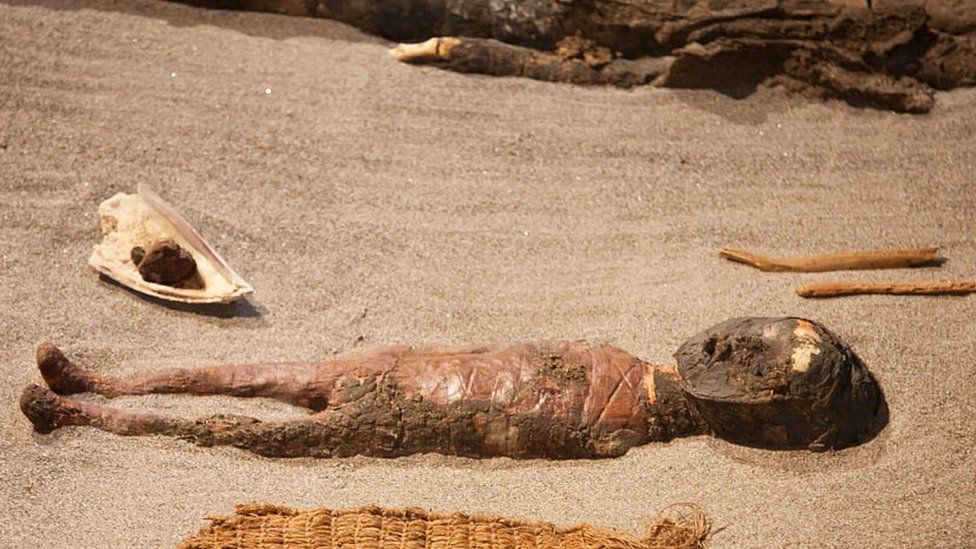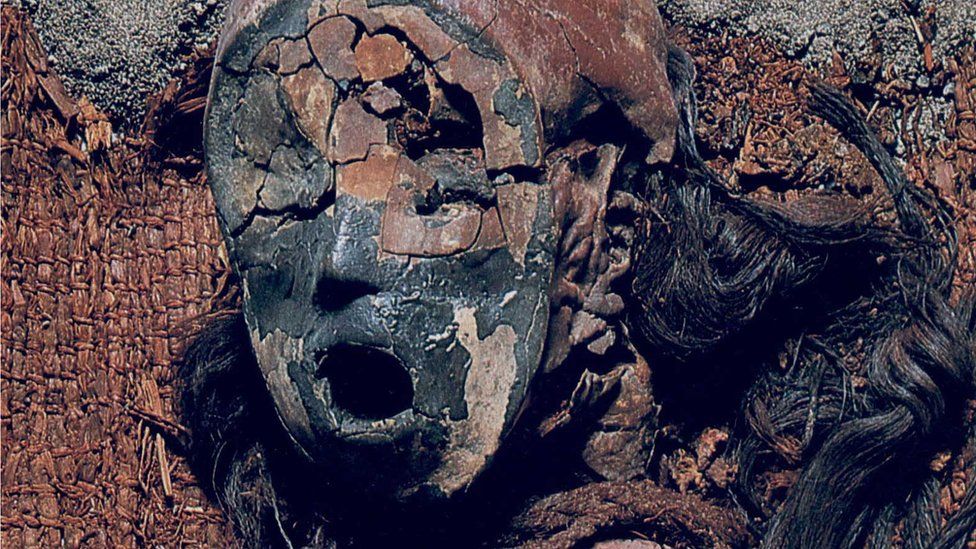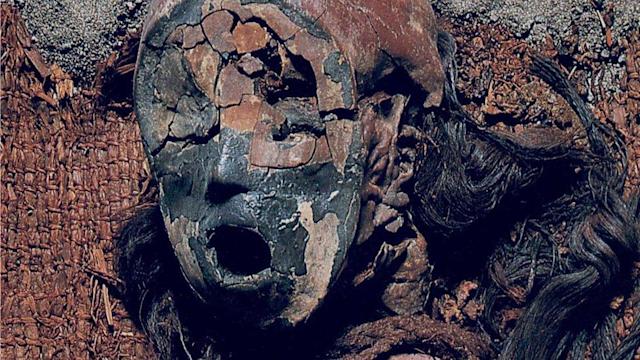Living with the world’s oldest mummies–
“It may seem strange for some people to live on top of a graveyard, but we’re used to it,” says Ana María Nieto, who lives in the Chilean port city of Arica.
The following written content by Jane Chambers

IMAGE SOURCE,GETTY IMAGES/ They covered the mummies’ faces with clay masks
Arica, on the border with Peru, is built on the sandy dunes of the Atacama desert, the driest desert in the world.
But long before the coastal town was founded in the 16th Century, this area was home to the Chinchorro people.
Their culture hit the news in July when the United Nations’ cultural organisation, Unesco, added hundreds of mummies preserved by them to its World Heritage List.
The Chinchorro mummies were first documented in 1917 by German Archaeologist Max Uhle, who had found some of the preserved bodies on a beach. But it took decades of research to determine their age.
Radiocarbon dating eventually showed that the mummies were more than 7,000 years old – more than two millennia older than the more widely known Egyptian mummies.

IMAGE SOURCE,GETTY IMAGES / The Chinchorro mummified children and babies as well as adults
Chinchorro culture
- Pre-ceramic culture that lasted from 7,000 to 1,500 BC
- Sedentary fishers and hunter-gatherers
- Lived in what is now northernmost Chile and southern Peru
- Mummified their dead in a sophisticated and evocative manner
- Mummification is believed to have started as a way to keep the memories of the dead alive
That makes the Chinchorro mummies the oldest known archaeological evidence of artificially mummified bodies.
/scenic-view-of-sea-by-cliff-against-sky-746107523-5b80a9f046e0fb00503e7dad.jpg)
Anthropologist Bernardo Arriaza, an expert on the Chinchorro, says they practiced intentional mummification. That means they used mortuary practices to conserve the bodies rather than leave them to naturally mummify in the dry climate – although some naturally mummified bodies have also been found at the sites.
Small incisions would be made to a body, the organs taken out and the cavities dried while the skin was ripped off, Mr Arriaza explains.
The Chinchorro people would then stuff the body with natural fibres and sticks to keep it straight before using reeds to sew the skin back on.
They would also attach thick black hair onto the mummy’s head and cover its face with clay and a mask with openings for the eyes and mouth. Read more from BBC.

IMAGE SOURCE,COURTESY UNIVERSITY OF TARAPACÁ / The Chinchorro mummified children – in this case a boy estimated to be six or seven – as well as adults





